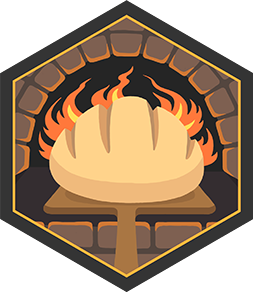Measure ingredients
Measure dry and liquid ingredients using measuring cups, spoons, and a kitchen scale to make a simple fruit salad while learning fractions and accuracy.



Step-by-step guide to measure ingredients
How to Measure Ingredients
Step 1
Wash your hands with soap for 20 seconds.
Step 2
Rinse each piece of fruit under cold running water.
Step 3
Dry the fruit with a clean towel or paper towel.
Step 4
With an adult present cut the fruit into bite-sized pieces on the cutting board.
Step 5
Place the kitchen scale on a flat counter surface.
Step 6
Turn the kitchen scale on using its power button.
Step 7
Put the empty large mixing bowl on the scale.
Step 8
Press the tare or zero button to reset the scale to 0 grams.
Step 9
Use a measuring cup to scoop and add 1/2 cup of chopped apples into the mixing bowl.
Step 10
Use a measuring cup to scoop and add 1/4 cup of chopped bananas into the mixing bowl.
Step 11
Use a measuring spoon to add 1 tablespoon of lemon juice or 1 tablespoon of yogurt into the small bowl to make the dressing.
Step 12
Place the mixing bowl with the fruit on the scale.
Step 13
Read the number of grams shown on the scale.
Step 14
Stir the fruit and dressing gently together with a spoon.
Step 15
Share your finished fruit salad on DIY.org.
Final steps
You're almost there! Complete all the steps, bring your creation to life, post it, and conquer the challenge!


Help!?
What can we use if we don't have a kitchen scale?
If you don't have a kitchen scale, use the measuring cups from steps 9–10 to measure volume instead of grams or bring the mixing bowl to a store with a public scale after completing steps 1–4 and 9–11.
The scale number keeps changing or won't read zero—what should we do?
If the scale fluctuates or won't reset, make sure it's on a flat counter surface (step 6), center the empty mixing bowl, press the tare/zero button (step 8), and replace the scale batteries if the reading still jumps.
How can I adapt this activity for different ages?
For younger kids (3–5), have an adult do the cutting on the cutting board (step 4) while the child rinses, dries, and scoops with the measuring cups (steps 1–3, 9–10), and for older kids (8+), let them operate the scale, tare it, read grams, and stir the fruit and dressing (steps 6–8, 15–16).
How can we make the fruit-salad activity more fun or personalized?
To extend the activity, weigh each fruit separately on the kitchen scale (steps 6–8, 15), try different dressings in the small bowl (step 11), record the grams on paper to make a simple chart, and then share your finished fruit salad on DIY.org (step 18).
Watch videos on how to measure ingredients
Lesson: How To Measure Ingredients | Blue Jean Chef
Facts about kitchen measuring and fractions
⚖️ Many cooks use a kitchen scale and grams for the most accurate results — pro bakers almost always weigh ingredients.
🧮 Fractions like 1/2, 1/3 and 1/4 are used all the time in kitchens, so cooking is a tasty way to practice math.
🍓 Fruit salad is an easy, colorful recipe to explore flavors — most home fruit salads mix about 3–6 different fruits.
🥣 In the U.S. a cup is commonly treated as 240 milliliters, so using milliliters helps share recipes with the world.
🥄 Measuring spoons usually come as 1/4 tsp, 1/2 tsp, 1 tsp and 1 tbsp — the tiny tools that make recipes consistent!
How do I teach my child to measure dry and liquid ingredients to make a fruit salad?
What materials do I need to measure ingredients for a fruit salad activity?
What ages is measuring ingredients for a fruit salad suitable for?
What are the benefits and safety tips when measuring ingredients with children?


One subscription, many ways to play and learn.
Only $6.99 after trial. No credit card required


